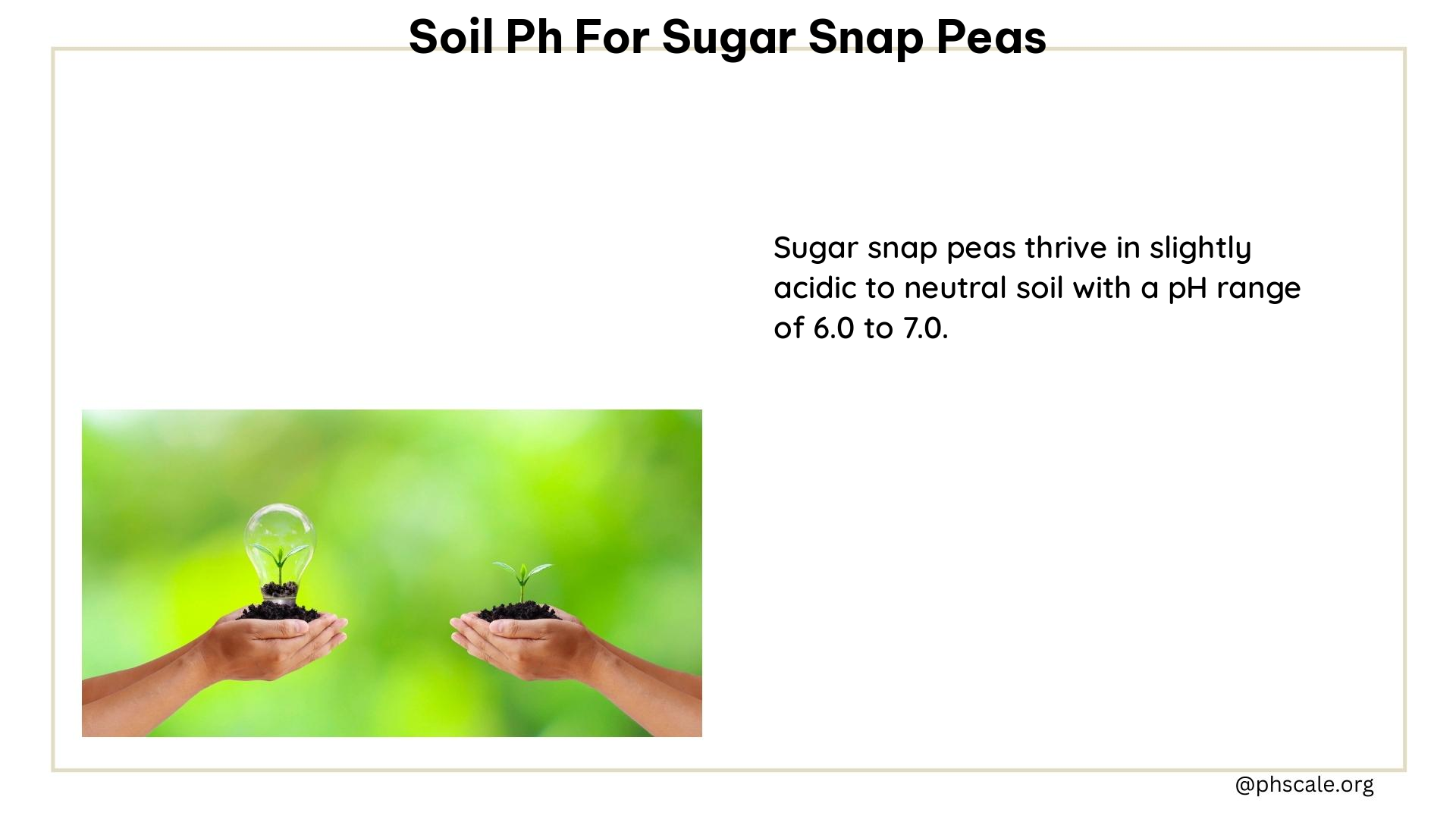The ideal soil pH range for cultivating lush and bountiful sugar snap peas is between 5.8 and 7.0. This slightly acidic to neutral soil environment provides the perfect conditions for these delightful legumes to thrive, ensuring a plentiful harvest. In this comprehensive guide, we’ll delve into the intricacies of soil pH, its impact on sugar snap pea growth, and practical strategies to maintain the optimal pH levels for your garden.
Understanding Soil pH and Its Importance
Soil pH is a measure of the acidity or alkalinity of the soil, ranging from 0 to 14, with 7 being neutral. Anything below 7 is considered acidic, while values above 7 are alkaline. The pH of the soil directly affects the availability and absorption of essential nutrients by the plants, making it a crucial factor in successful gardening.
Optimal pH Range for Sugar Snap Peas

Sugar snap peas are versatile and can adapt to a wide range of soil types, but they thrive best in a slightly acidic to neutral pH range of 5.8 to 7.0. This pH range ensures that the plants can efficiently uptake the necessary nutrients, leading to robust growth, vibrant foliage, and an abundant harvest.
Effects of Acidic Soil
While sugar snap peas can tolerate slightly acidic soil, extreme acidity (pH below 5.8) can inhibit the absorption of essential minerals, leading to yellowing or curling leaves, stunted growth, and reduced yields. In such cases, it’s essential to amend the soil to bring the pH back into the optimal range.
Effects of Alkaline Soil
On the other hand, highly alkaline soil (pH above 7.5) can also pose challenges for sugar snap peas. Elevated pH levels can interfere with the plants’ ability to absorb important nutrients, potentially resulting in nutrient deficiencies and suboptimal growth.
Balancing Soil pH for Sugar Snap Peas
Maintaining the ideal soil pH for sugar snap peas is crucial for their overall health and productivity. Here are some effective strategies to balance the soil pH:
Soil Testing
Before making any adjustments, it’s essential to test the soil pH to determine the current level. This can be done through a soil testing kit or by sending a sample to a local agricultural extension service for analysis.
Acidifying the Soil
If the soil is too alkaline, you can lower the pH by incorporating organic matter such as compost, peat moss, or well-rotted manure. Additionally, you can use sulfur or aluminum sulfate to gradually acidify the soil.
Alkalizing the Soil
If the soil is too acidic, you can raise the pH by adding lime, wood ash, or crushed eggshells. These amendments help neutralize the acidity and create a more favorable environment for sugar snap peas.
Contaminants and Chemicals to Avoid
Certain contaminants and chemicals can negatively impact the growth and health of sugar snap peas, regardless of the soil pH. These include:
- Fungal diseases like fusarium wilt and powdery mildew
- Pests such as aphids and pea weevils
- Excessive nitrogen, phosphorus, or potassium from fertilizers
- Heavy metals like lead, mercury, or cadmium
To address these issues, practice crop rotation, use resistant varieties, apply insecticidal soap, and follow the manufacturer’s instructions for fertilizer application. If heavy metal contamination is a concern, conduct a soil test and consider remediation methods.
Helpful Tips for Growing Thriving Sugar Snap Peas
- Sow new seeds every two to four weeks for a continuous harvest.
- Keep the soil consistently moist, but not waterlogged, to prevent root rot.
- Provide support for the climbing vines using trellises or fences.
By understanding the optimal soil pH range and implementing the strategies outlined in this guide, you can create the perfect growing conditions for your sugar snap peas, ensuring a bountiful and delicious harvest.
Reference:
- https://extension.psu.edu/a-gardeners-guide-to-peas
- https://www.growitlocal.com/blogs/how-to-grow-sugar-snap-peas
- https://farmplasticsupply.com/blog/sugar-snap-peas-how-to-plant-grow-and-harvest
- https://www.thespruce.com/snap-peas-growing-guide-7111002
- https://www.reddit.com/r/gardening/comments/11t7klk/is_a_ph_of_75_8_too_alkaline_to_grow_veggies/
